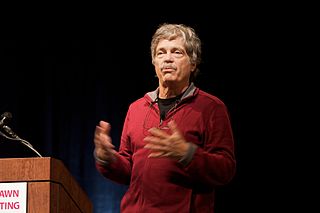
Smalltalk is an object-oriented, dynamically typed reflective programming language. Smalltalk was created as the language in underpinning the "new world" of computing exemplified by "human–computer symbiosis". It was designed and created in part for educational use, more so for constructionist learning, at the Learning Research Group (LRG) of Xerox PARC by Alan Kay, Dan Ingalls, Adele Goldberg, Ted Kaehler, Scott Wallace, and others during the 1970s.

Design Patterns: Elements of Reusable Object-Oriented Software (1994) is a software engineering book describing software design patterns. The book's authors are Erich Gamma, Richard Helm, Ralph Johnson and John Vlissides with a foreword by Grady Booch. The book is divided into two parts, with the first two chapters exploring the capabilities and pitfalls of object-oriented programming, and the remaining chapters describing 23 classic software design patterns. The book includes examples in C++ and Smalltalk.
In software engineering, a software design pattern is a general, reusable solution to a commonly occurring problem within a given context in software design. It is not a finished design that can be transformed directly into source or machine code. It is a description or template for how to solve a problem that can be used in many different situations. Design patterns are formalized best practices that the programmer can use to solve common problems when designing an application or system.
Protocol is a term used by particular object-oriented programming languages with a variety of specific meanings, which other languages may term interface or trait, and often associated with languages from Apple Inc.
In computer science, a metaobject is an object that manipulates, creates, describes, or implements objects. The object that the metaobject pertains to is called the base object. Some information that a metaobject might define includes the base object's type, interface, class, methods, attributes, parse tree, etc. Metaobjects are examples of the computer science concept of reflection, where a system has access to its own internal structure. Reflection enables a system to essentially rewrite itself on the fly, to alter its own implementation as it executes.
The Object Oriented Role Analysis and Modeling (OOram) is a method, based on the concept of role, for performing object-oriented modeling.

Trygve Mikkjel Heyerdahl Reenskaug is a Norwegian computer scientist and professor emeritus of the University of Oslo. He formulated the model–view–controller (MVC) pattern for graphical user interface (GUI) software design in 1979 while visiting the Xerox Palo Alto Research Center (PARC). His first major software project, "Autokon," produced a successful CAD/CAM program which was first used in 1963, and continued in use by shipyards worldwide for more than 30 years.

Programming language theory (PLT) is a branch of computer science that deals with the design, implementation, analysis, characterization, and classification of programming languages and their individual features. It falls within the discipline of computer science, both depending on and affecting mathematics, software engineering, linguistics and even cognitive science. It is a well-recognized branch of computer science, and an active research area, with results published in numerous journals dedicated to PLT, as well as in general computer science and engineering publications.
The top type in the type theory of mathematics, logic, and computer science, commonly abbreviated as top or by the down tack symbol (⊤), is the universal type, sometimes called the universal supertype as all other types in any given type system are subtypes of top. In most cases it is the type which contains every possible object in the type system of interest. It is in contrast with the bottom type, or the universal subtype, which every other type is supertype of and in most cases it is the type that contains no members at all.
Etoys is a child-friendly computer environment and object-oriented prototype-based programming language for use in education.
The DASL Programming Language is a high-level, strongly typed programming language originally developed at Sun Microsystems Laboratories between 1999 and 2003 as part of the Ace Project. The goals of the project were to enable rapid development of web-based applications based on Sun's J2EE architecture, and to eliminate the steep learning curve of platform-specific details.

The Art of the Metaobject Protocol (AMOP) is a 1991 book by Gregor Kiczales, Jim des Rivieres, and Daniel G. Bobrow on the subject of metaobject protocol.
Aida/Web is an object-oriented, open source Smalltalk web application server using the model-view-controller (MVC) architectural pattern.
In type theory, bounded quantification refers to universal or existential quantifiers which are restricted ("bounded") to range only over the subtypes of a particular type. Bounded quantification is an interaction of parametric polymorphism with subtyping. Bounded quantification has traditionally been studied in the functional setting of System F<:, but is available in modern object-oriented languages supporting parametric polymorphism (generics) such as Java, C# and Scala.
Object-oriented programming (OOP) is a programming paradigm based on the concept of "objects", which can contain data, in the form of fields, and code, in the form of procedures. A feature of objects is an object's procedures that can access and often modify the data fields of the object with which they are associated. In OOP, computer programs are designed by making them out of objects that interact with one another. OOP languages are diverse, but the most popular ones are class-based, meaning that objects are instances of classes, which also determine their types.
Dart is a general-purpose programming language originally developed by Google and later approved as a standard by Ecma (ECMA-408). It is used to build web, server, desktop, and mobile applications.





